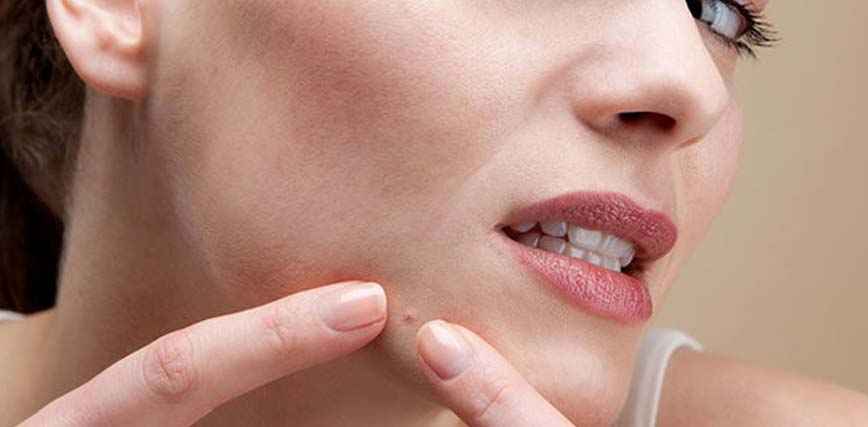Fungal Acne: Symptoms & How To Treat It?

Whether it is classic, hormonal, or fungal, acne poses numerous disadvantages. The term ” fungal acne” has come on the beauty map in recent years. Acne caused by fungi lacks comedones, seborrhea, and hormonal effects. Therefore, it differs significantly from the acne we all know.
Do you suffer from acne caused by fungi? In this article, we are going to explain What is Fungal Acne, its symptoms, how to treat it, and what causes it.
What is Fungal Acne?
Fungal acne resembles dandruff more than blackheads. This type of folliculitis predominantly affects young adults, particularly on the back and chest, but can also occur on the neck and back of the arms.
Rarely is fungi acne detected on the face or forehead? However, due to the beard, males can develop chin acne caused by fungi.
Therefore, fungus acne is caused by a fungus and not a hormonal reaction. This fungus, also known as Pityrosporum folliculitis or Malassezia folliculitis, manifests as itchy, uncomfortable red pimples.
How Can Fungal Acne Occur?
Acne caused by fungi is frequently provoked by the use of pore-clogging moisturizers and sunscreens, as well as by the combination of tight clothing, perspiration, and humidity. If you play sports in Lycra gear, you should be aware of this fact.
In addition, poor hygiene and some topical corticosteroid therapies can also contribute to the development of fungi acne.
Fungal Acne Symptoms
Acne caused by fungi manifests as a red pimple-shaped boil that can be itchy. This condition dries up the skin, resulting in peeling.
Even when comparing photos, it might be difficult to discern fungi acne from hormonal acne at times. This condition should also not be confused with rosacea, which is characterized by redness without rashes. If you are unsure whether you have classic acne, it is essential to visit a doctor.
Fungi acne may or may not resemble ordinary acne; it is frequently irritating and has the appearance of a uniform rash. Additionally, red pimples tend to occur at the same time.
Fungal Acne Treatment
To treat fungus acne, you may need to make lifestyle adjustments.
First, it is recommended to take a daily shower and change clothes after each sporting activity. It is crucial to act immediately so that you are not exposed to the combination of tight clothing, sweat, and humidity. You are already aware that this results in fungus acne. The use of loose clothing improves fungal acne.
Dermatologists advocate treating minor fungi acne with antifungal cleansers or even traditional anti-dandruff shampoos, which contain ketoconazole, zinc pyrithione, or selenium sulfide. These combat the fungus that causes acne.
If you have severe fungi acne, it may be necessary for you to take oral drugs prescribed by a dermatologist.
See More: Hydrafacial Treatment
Follow Top and Trending on Google News and receive the latest alerts and the main news about apps, technology, beauty, entertainment, and all the top 10 related posts.
